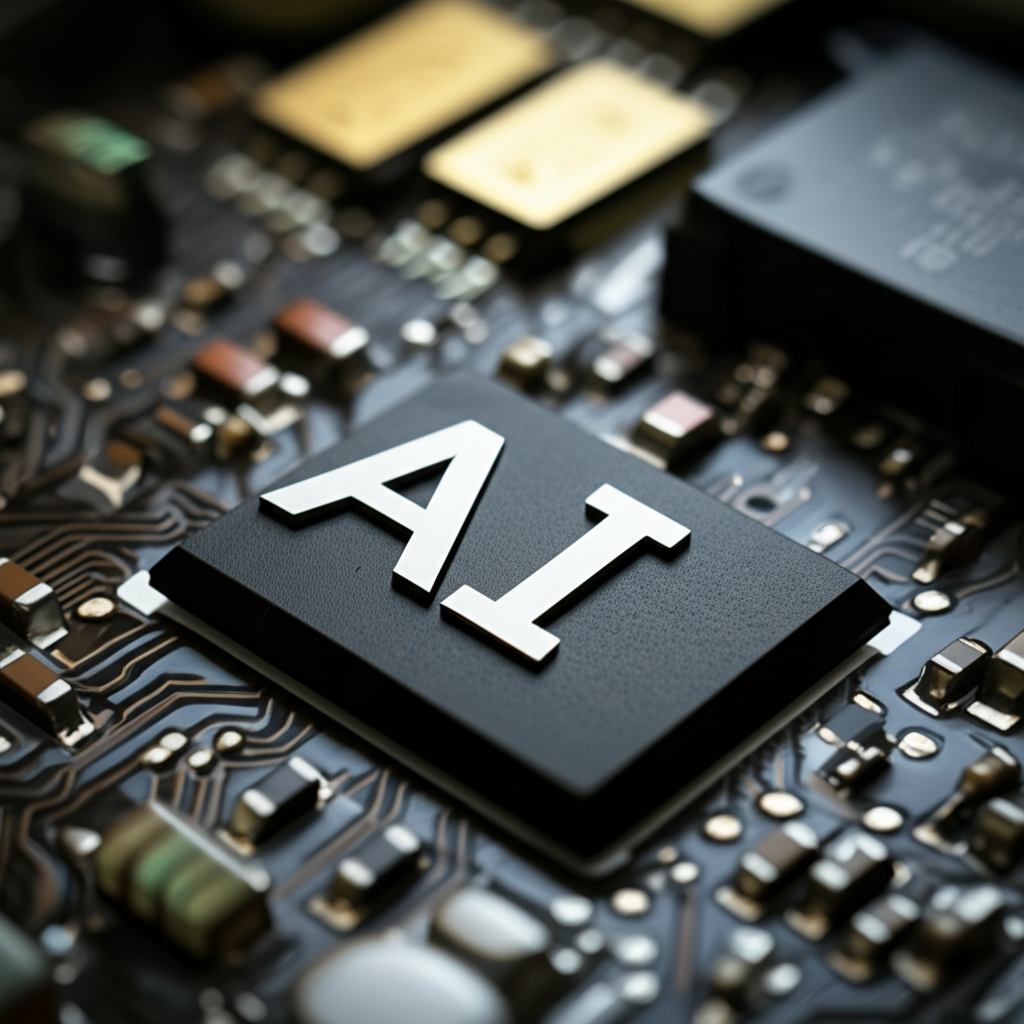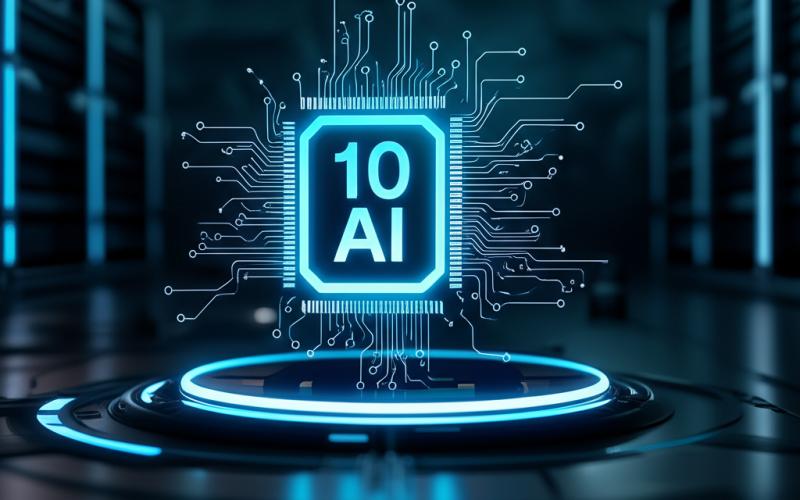Table of Contents Show
AI is rapidly transforming the landscape of software development, offering developers unprecedented opportunities to automate tasks, improve efficiency, and create innovative solutions. Embracing AI tools is no longer a luxury but a necessity for developers looking to stay ahead in this dynamic field. This post will introduce you to the top 10 AI tools that every developer should explore to enhance their skills and build next-generation applications.
Step-by-Step Process
Research Tools
Identify top AI tools for developers.
Evaluate Features
Compare features and capabilities of each tool.
Read Reviews
Check user reviews and case studies.
Test Free Trials
Experiment with free trials or demos.
Integrate & Use
Integrate chosen tools into your workflow.
Process infographic for Top 10 Ai Tools Every Developer Must Try
1. TensorFlow
Overview of TensorFlow
TensorFlow is an open-source machine learning framework developed by Google. It provides a comprehensive ecosystem of tools, libraries, and community resources that allow developers to build and deploy AI-powered applications. TensorFlow is known for its flexibility, scalability, and strong support for deep learning models.
Use Cases and Applications
TensorFlow is widely used for building various machine learning models, including image recognition, natural language processing, and predictive analytics. Its deep learning capabilities make it suitable for complex applications such as neural machine translation and object detection. Many Google products, like Google Search and Google Translate, leverage TensorFlow.
Getting Started with TensorFlow
To install TensorFlow, you can use pip: pip install tensorflow. The official TensorFlow website offers comprehensive tutorials and documentation to help you get started. Explore the TensorFlow Playground for interactive experimentation with neural networks.
2. PyTorch
Overview of PyTorch
PyTorch is an open-source machine learning framework based on the Torch library. Developed by Facebook’s AI Research lab, PyTorch is favored for its dynamic computation graph, which provides flexibility in model design and debugging. It is particularly popular in the research community.
Use Cases and Applications
PyTorch is commonly used for research and prototyping of new machine learning models due to its ease of use and flexibility. It is also suitable for building production-ready models, especially in areas like computer vision and NLP. Many researchers prefer PyTorch for its intuitive API and strong community support.
Getting Started with PyTorch
You can install PyTorch using pip or conda. Visit the official PyTorch website for detailed installation instructions tailored to your operating system and hardware. Numerous tutorials and examples are available to help you learn the basics of PyTorch.
3. Keras
Overview of Keras
Keras is a high-level neural networks API written in Python, capable of running on top of TensorFlow, CNTK, or Theano. It focuses on enabling fast experimentation and easy prototyping. Keras makes it easy to build and train neural networks with a simple and intuitive API.
Use Cases and Applications
Keras simplifies deep learning by providing a user-friendly interface for building complex models. It integrates well with TensorFlow and other backends, making it a versatile choice for various deep learning tasks. Keras is ideal for rapid prototyping and educational purposes.
Getting Started with Keras
Keras is typically installed alongside TensorFlow: pip install tensorflow. Keras is included with TensorFlow and can be accessed directly. The Keras documentation provides extensive examples and tutorials to guide you through building your first neural network.
4. Scikit-Learn
Overview of Scikit-Learn
Scikit-Learn is a simple and efficient tool for data mining and data analysis. Built on NumPy, SciPy, and matplotlib, this open source library features various classification, regression and clustering algorithms including support vector machines, random forests, gradient boosting, k-means and DBSCAN.
Use Cases and Applications
Scikit-Learn is used in numerous machine learning applications, including classification, regression, clustering, and dimensionality reduction. It also provides tools for data preprocessing and model evaluation. Perfect for projects that require standard machine learning algorithms with minimal coding effort.
Getting Started with Scikit-Learn
Install Scikit-Learn using pip: pip install scikit-learn. The official Scikit-Learn website provides comprehensive documentation and tutorials to get you started. Explore the example code to see how to apply different machine learning algorithms.

5. OpenCV
Overview of OpenCV
OpenCV (Open Source Computer Vision Library) is a library of programming functions mainly aimed at real-time computer vision. Originally developed by Intel, it is now supported by Willow Garage and Itseez. The library is cross-platform and free for use under the open-source BSD license.
Use Cases and Applications
OpenCV is extensively used for image and video processing, object detection, and facial recognition. It is a fundamental tool for computer vision projects in robotics, security systems, and autonomous vehicles. OpenCV enables developers to build sophisticated vision-based applications.
Getting Started with OpenCV
Install OpenCV using pip: pip install opencv-python. The OpenCV documentation provides a wealth of information and tutorials to help you learn the library. Experiment with basic image manipulation techniques to understand its capabilities.
6. NLTK (Natural Language Toolkit)
Overview of NLTK
NLTK (Natural Language Toolkit) is a leading platform for building Python programs to work with human language data. It provides easy-to-use interfaces to over 50 corpora and lexical resources such as WordNet, along with a suite of text processing libraries for classification, tokenization, stemming, tagging, parsing, and semantic reasoning.
Use Cases and Applications
NLTK is widely used for text processing, sentiment analysis, and natural language understanding tasks. It provides tools for tokenization, stemming, tagging, and parsing. Ideal for educational purposes and small-scale NLP projects.
Getting Started with NLTK
Install NLTK using pip: pip install nltk. After installation, you may need to download additional data using nltk.download('popular'). The NLTK book and online documentation offer comprehensive guidance.
7. spaCy
Overview of spaCy
spaCy is an open-source library for advanced Natural Language Processing in Python. It’s designed specifically for production use and helps you build applications that process and “understand” large volumes of text. spaCy is known for its speed and efficiency.
Use Cases and Applications
spaCy excels in NLP tasks such as named entity recognition, part-of-speech tagging, and dependency parsing. It’s designed for industrial-strength natural language understanding and is often used in production environments. spaCy’s efficiency makes it suitable for processing large text datasets.
Getting Started with spaCy
Install spaCy using pip: pip install spacy. Download the appropriate language model, for example: python -m spacy download encoreweb_sm. The spaCy documentation provides comprehensive guides and examples.
8. Hugging Face Transformers
Overview of Hugging Face Transformers
Hugging Face Transformers provides thousands of pre-trained models to perform tasks on texts such as text classification, information extraction, question answering, summarization, translation, text generation, etc. Its aim is to make cutting-edge NLP easier to use for everyone.
Use Cases and Applications
Hugging Face Transformers enables developers to leverage state-of-the-art NLP models for various tasks without training from scratch. It offers pre-trained models for text classification, question answering, and text generation. Ideal for projects that require high-performance NLP capabilities.

Getting Started with Hugging Face Transformers
Install Transformers using pip: pip install transformers. Hugging Face provides extensive documentation and tutorials on its website. Explore the pre-trained models and fine-tuning examples to get started.
9. Apache MXNet
Overview of Apache MXNet
Apache MXNet is a deep learning framework designed for both efficiency and flexibility. It allows you to mix symbolic and imperative programming to maximize efficiency. Its flexible architecture makes it ideal for building complex models.
Use Cases and Applications
Apache MXNet is used for building deep learning models that require scalability and performance. It supports various programming languages, including Python, R, and Scala. MXNet is suitable for large-scale distributed training.
Getting Started with Apache MXNet
Install MXNet using pip: pip install mxnet. The Apache MXNet website provides installation instructions and tutorials. Explore the examples to learn how to build and train deep learning models.
10. Google Cloud AI Platform
Overview of Google Cloud AI Platform
Google Cloud AI Platform is a suite of services that allows data scientists and developers to build, deploy, and manage machine learning models in the cloud. It provides a scalable and secure environment for developing AI applications.
Use Cases and Applications
Google Cloud AI Platform enables developers to build and deploy machine learning models without managing infrastructure. It supports model deployment, prediction, and model management. Ideal for cloud-based machine learning projects.

Getting Started with Google Cloud AI Platform
You need a Google Cloud account to use Google Cloud AI Platform. Follow the instructions on the Google Cloud website to set up an account and access the AI Platform. Google Cloud provides extensive documentation and tutorials to guide you.
Conclusion
This overview introduced ten essential AI tools that can significantly enhance any developer’s toolkit. From robust frameworks like TensorFlow and PyTorch to specialized libraries like OpenCV and spaCy, these tools offer a wide range of capabilities for building intelligent applications. Don’t hesitate to dive in, experiment, and discover how these tools can transform your projects and career. The future of development is undoubtedly intertwined with AI, and now is the perfect time to start exploring.
FAQ
Q: What are the main differences between TensorFlow and PyTorch?
TensorFlow and PyTorch differ primarily in their computational graph approach. TensorFlow uses a static graph, which can be more efficient for deployment but less flexible during development. PyTorch, on the other hand, uses a dynamic graph, which allows for more flexibility and easier debugging. PyTorch is often favored for research, while TensorFlow is commonly used in production environments. Community support is strong for both, but they cater to slightly different developer preferences and needs.
Q: How can I choose the right AI tool for my project?
Selecting the right AI tool depends on your project requirements, team expertise, and available resources. Consider factors such as the complexity of the problem, the size of the dataset, and the need for scalability. If you’re working on a research-oriented project with a focus on flexibility, PyTorch might be a good choice. For large-scale production deployments, TensorFlow could be more suitable. Evaluate your team’s familiarity with each tool and the available support resources before making a decision.
Q: Are these AI tools suitable for beginners?
Some AI tools have a steeper learning curve than others. Keras is often recommended for beginners due to its simple and intuitive API. Scikit-Learn is also relatively easy to learn for basic machine learning tasks. TensorFlow and PyTorch can be more challenging for newcomers, but they offer extensive tutorials and documentation to help beginners get started. NLTK is great for learning about natural language processing basics.
Q: Can these AI tools be used for both research and production?
Yes, most of these AI tools can be used for both research and production, but their suitability may vary. PyTorch is particularly popular for research due to its flexibility and ease of use. TensorFlow is widely used in production environments due to its scalability and deployment capabilities. Keras simplifies the development process and can be used for rapid prototyping and building production-ready models. Scikit-Learn is suitable for standard machine learning tasks in both research and production.
Q: What are some common challenges when using AI tools, and how can they be overcome?
Common challenges include data quality, model performance, and computational resources. Ensuring data quality requires careful data cleaning and preprocessing. Improving model performance may involve tuning hyperparameters, using more complex architectures, or collecting more data. Computational resource limitations can be addressed by using cloud-based platforms like Google Cloud AI Platform or by optimizing code for efficiency. It’s also important to stay updated with the latest research and best practices in the field.




